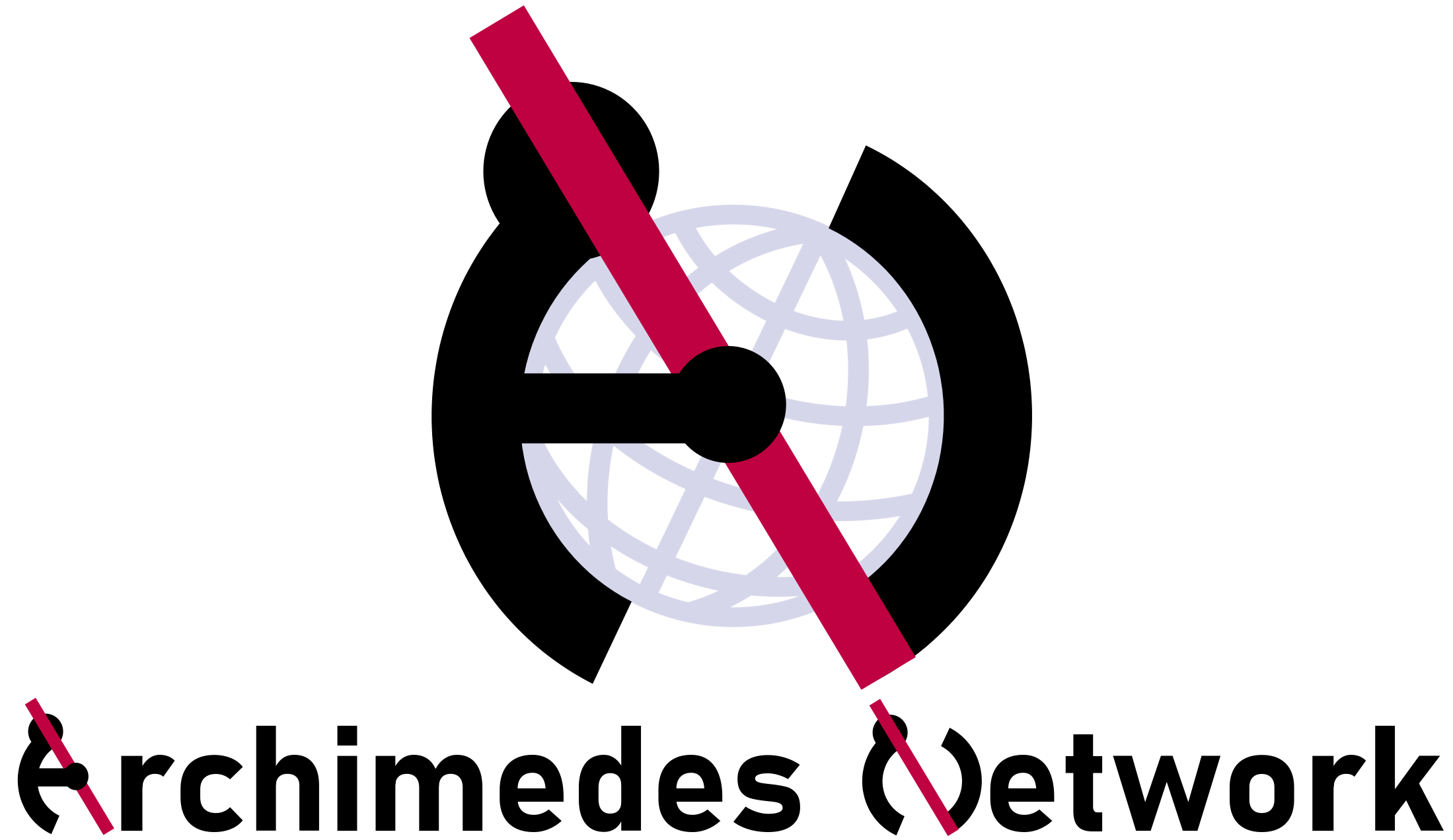

aleph.se/andart2 | @anderssandberg
Anders Sandberg’s research at the Archimedes Network centers on management of low-probability high-impact risks, estimating the capabilities of future technologies, and very long-range futures.
Topics of particular interest include global catastrophic risk, cognitive biases, cognitive enhancement, collective intelligence, neuroethics, and public policy.
Anders was at the Future of Humanity Institute at Oxford until April 2024. He has a background in computer science, neuroscience and medical engineering. He obtained his Ph.D. in computational neuroscience from Stockholm University, Sweden, for work on neural network modelling of human memory.

|
Preprints Aware of Information Hazards for Security Studies (PAIHSS) |
Publications (54)
Quantum Biology Risks: A Threat Model to Inform Research and Development Funding.
What is the Upper Limit of Value? (Anders Sandberg, David Manheim)
Defence in Depth Against Human Extinction: Prevention, Response, Resilience, and Why They All Matter (Owen Cotton‐Barratt, Max Daniel & Anders Sandberg in Global Policy; DOI 10.1111/1758-5899.12786)
Who Should We Fear More: Biohackers, Disgruntled Postdocs, or Bad Governments? A Simple Risk Chain Model of Biorisk
Long-Term Trajectories of Human Civilization (Seth D. Baum, Stuart Armstrong, Robin Hanson, Matthijs M. Maas, Anders Sandberg, et al., 2019)
Space races: settling the universe fast. (Sandberg, A. 2018. Technical Report #2018-01. Future of Humanity Institute. University of Oxford)
Information Hazards in Biotechnology (Gregory Lewis, Piers Millett, Anders Sandberg, Andrew Snyder-Beattie and Gigi Gronvall; first published online 2018; Risk Analysis, Vol. 39, No. 5, 2019)
Dissolving the Fermi Paradox (Anders Sandberg, Eric Drexler, Toby Ord; 2018) arXiv:1806.02404
That is not dead which can eternal lie: the aestivation hypothesis for resolving Fermi’s paradox. (Sandberg, A., Armstrong, S., Ćirković, M. (2017). arXiv:1705.03394v1)
Modeling the social dynamics of moral enhancement: social strategies sold over-the-counter and the stability of society (Joao Fabiano and Anders Sandberg)
The unilateralist’s curse: The case for a principle of conformity. (Bostrom, N., Douglas, T. & Sandberg, A. 2016. Social Epistemology, 30(4), 350-371)
2016 | Energetics of the Brain and AI. (Sandberg A. 2016. Sapience Project)
La voiture autonome et ses implications morales. (Sandberg, A., Bradshaw-Martin, H., & Gérardin-Laverge, M. 2015. Multitudes, (1), 62-68.)
Monte Carlo model of brain emulation development. (Sandberg, A. (2014). (Working Paper #2014-1). Future of Humanity Institute & Oxford Martin Programme on the Impacts of Future Technology Oxford Martin School, University of Oxford)
2014 | Is Brain Emulation Dangerous? (Eckersley, P. & Sandberg, A. (2014). Journal of Artificial General Intelligence, 4(3), pp. 170-194.)
More, M., & Vita-More, N. (Eds.). (2013). The transhumanist reader: Classical and contemporary essays on the science, technology, and philosophy of the human future. John Wiley & Sons.
Rena tankar utan kött och känslor (Sandberg, A. 2013. Axess #5)
The autopilot problem. (Armstrong, S., Bradshaw, H., Beckstead, N., Sandberg, A. (2013). In Systemic Risks of Modelling. Defining Systemic Risk)
Biased error search as a risk of modelling in insurance. (Beckstead, N., Armstrong, S., Sandberg, A. (2013). In Systemic Risks of Modelling.)
Thinking inside the box: Controlling and using an oracle ai. (Armstrong, S., Sandberg, A., & Bostrom, N. 2012. Minds and Machines, 22(4), 299-324)
Machine Intelligence Survey (Sandberg, A. & Bostrom, N. 2011 , (Technical Report #2011-1). Future of Humanity Institute, University of Oxford)
Probing the improbable: methodological challenges for risks with low probabilities and high stakes. (Ord, T., Hillerbrand, R., & Sandberg, A. 2010. Journal of Risk Research, 13(2), 191-205)
Cirkovic, M. M., Sandberg, A., & Bostrom, N. (2010). Anthropic shadow: Observation selection effects and human extinction risks. Risk analysis, 30(10), 1495-1506.
Cognitive enhancement: methods, ethics, regulatory challenges. (Bostrom, N., & Sandberg, A. 2009. Science and engineering ethics, 15(3), 311-341)
Cognitive enhancement: Methods, ethics, regulatory challenges. (Bostrom, N., & Sandberg, A. 2009. Science and engineering ethics, 15(3), 311-341.)
Rorschach, Ozymandias, and Dr. Manhattan. Can good, but uncertain ends justify any means? (Hillerbrand, R., & Sandberg, A. 2009. In B. Dyer (Ed.), The Philosophy of supervillains. Chicago, IL: Open Court)
Brain Boosters. (Sandberg, A. & Bostrom, N. 2009. In P. Healey (Ed.) Unnatural Selection: The Challenges of Engineering Tomorrow’s People)
Bostrom, N., & Sandberg, A. (2008). The wisdom of nature: an evolutionary heuristic for human enhancement. Human enhancement, 375-416.
Unnatural selection: the challenges of engineering tomorrow’s people. (Healey, P., & Rayner, S. (Eds.). 2008. Earthscan)
Ravelingien, A., & Sandberg, A. (2008). Sleep better than medicine? Ethical issues related to wake enhancement. Journal of medical ethics, 34(9), e9-e9.
How can we reduce the risk of human extinction. (Sandberg, A., Matheny, J., & Cirkovic, M. 2008. Bulletin of the Atomic Scientists, 9)
Whole Brain Emulation: A Roadmap (Sandberg, A. & Bostrom, N. (2008). (Technical Report #2008‐3), Future of Humanity Institute, University of Oxford)
Global Catastrophic Risks Survey (Sandberg, A. & Bostrom, N. (2008). (Technical Report #2008-1), Future of Humanity Institute, University of Oxford)
Chakraborty, S., Sandberg, A., & Greenfield, S. A. (2007). Differential dynamics of transient neuronal assemblies in visual compared to auditory cortex. Experimental brain research, 182(4), 491-498.
Biotechnology and the promise of tailor-made medicine. (Sandberg, A. (2007). In F. Ficai (Ed.), Unlocking ideas: Essays from the Amigo Society (pp. 61-67). London, UK: Stockholm Network)
Definitions of enhancement, review of cognitive enhancement technologies, review of ethical topics in cognitive enhancement. (Sandberg, A. 2007. Reports from ENHANCE Project)
Cognitive enhancement: Can we afford to ban It? (Sandberg, A. 2007. Proceedings from Enhancement and Genetics Conference. University of Jena, Germany)
Converging cognitive enhancements. (Sandberg, A., & Bostrom, N. 2006. Annals of the New York Academy of Sciences, 1093(1), 201-227)
Den Hänsynsfulla Taggen [‘The considerate tag’]: On the impact of identification technology. (Sandberg, A. (2006). Eudoxa Policy Study #9, Eudoxa AB)
Den forstaerkede hjerne. (Sandberg, A. 2006. In G. Balling & K. Lippert-Rasmussen (Eds.), Det menneskelige eksperiment (pp. 75-114). Museum Tusculanum Forlag, Denmark)
de Magalhaes, J. P., & Sandberg, A. (2005). Cognitive aging as an extension of brain development: A model linking learning, brain plasticity, and neurodegeneration. Mechanisms of ageing and development, 126(10), 1026-1033.
An autocatalytic model of STDP timing from slow calcium-dependent signals. (Sandberg, A., & Fransén, E. 2005. Neurocomputing, 65, 603-608)
Tekniken befriar kroppen [‘Technology frees the body: the future of medical technology, the patient and health care’] (Sandberg, A., Sanchez A., Ingdahl, W. (2005). Health Consumer Powerhouse.)
Computational memory models. Sandberg, A. (2004. Lund University cognitive studies #116)
Lansner, A., Fransén, E., & Sandberg, A. (2003). Cell assembly dynamics in detailed and abstract attractor models of cortical associative memory. Theory in Biosciences, 122(1), 19-36.
A working memory model based on fast Hebbian learning. (Sandberg, A., Tegnér, J., & Lansner, A. 2003. Network: Computation in Neural Systems, 14(4), 789-802)
Eudoxa policy study #2: On idea futures – making politicians put their money where their mouth is. (Sandberg, A. (2003). Eudoxa policy study #2: On idea futures – making politicians put their money where their mouth is, (tr. Lene Johansen). Eudoxa AB.)
Synaptic depression as an intrinsic driver of reinstatement dynamics in an attractor network. (Sandberg, A., & Lansner, A. 2002. Neurocomputing, 44, 615-622)
A Bayesian attractor network with incremental learning. (Sandberg, A., Lansner, A., Petersson, K. M., & Ekeberg. 2002. Network: Computation in neural systems, 13(2), 179-194)
“Som egenmäktiga gudar”: den svenska debatten om gen-och bioteknik på 1970-och 1980-talen. (Sandberg, A., Sanchez, A., & Ingdahl, W. 2002. Timbro)
Kong Markatta II – en transhumanists erkendelser. (Sandberg, A. 2002. In G. Ballig, Homo sapiens 2.0 – Når teknologien kryber ind under huden. Gads Forlag, Denmark)
Selective enhancement of recall through plasticity modulation in an autoassociative memory. (Sandberg, A., Lansner, A., & Petersson, K. M. 2001. Neurocomputing, 38, 867-873)
A palimpsest memory based on an incremental Bayesian learning rule. (Sandberg, A., Lansner, A., Petersson, K. M., & Ekeberg, Ö. 2000. Neurocomputing, 32, 987-994)
The physics of information processing superobjects: daily life among the Jupiter brains. (Sandberg, A. 1999. Journal of Evolution and Technology, 5(1), 1-34)